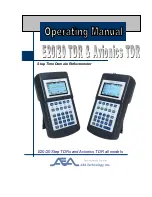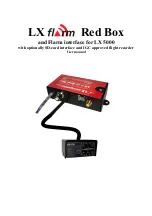
7
190-00607-02 Rev C
Detailed Operation
ADS-B Traffic (TRAF) Function
The ADS-B Traffic Function allows you to view other traffic in the area, when installed with a UAT data link
radio. This screen can also show your flight plan. Traffic is shown in relationship to your aircraft. “Smart” keys
allow you to zoom in and out, and select an individual traffic target. Review the Limitations section in the front of
this guide for the limitations that apply traffic data.
Automatic Dependent Surveillance-Broadcast (ADS-B) is a surveil-
lance technology being deployed in selected areas of the NAS. ADS-B
equipment broadcasts a radio transmission approximately once per
second containing the aircraft’s position, velocity, identification, and other
information. ADS-B equipment can also receive reports from other suit-
ably equipped aircraft within reception range. Additionally, these broad-
casts can be received by Ground Based Transceivers (GBTs) and used to
provide air traffic surveillance services, along with fleet operator monitor-
ing of aircraft. No ground infrastructure is necessary for ADS-B equipped
aircraft to detect each other.
In the United States, two different data links have been adopted for use with ADS-B: 1090 MHz Extended
Squitter (1090 ES) and the Universal Access Transceiver (UAT). The 1090 ES link is intended for aircraft that
primarily operate at FL180 and above, whereas the UAT link is intended for use by aircraft that primarily operate
at 18,000 feet and below. From a pilot’s standpoint, the two links operate similarly and support ADS-B and Traffic
Information Service-Broadcast (TIS-B). The UAT link additionally supports Flight Information Services-Broadcast
(FIS-B).
ADS-B Traffic page showing 360 degree arc
ADS-B System Description
ADS-B Traffic








































